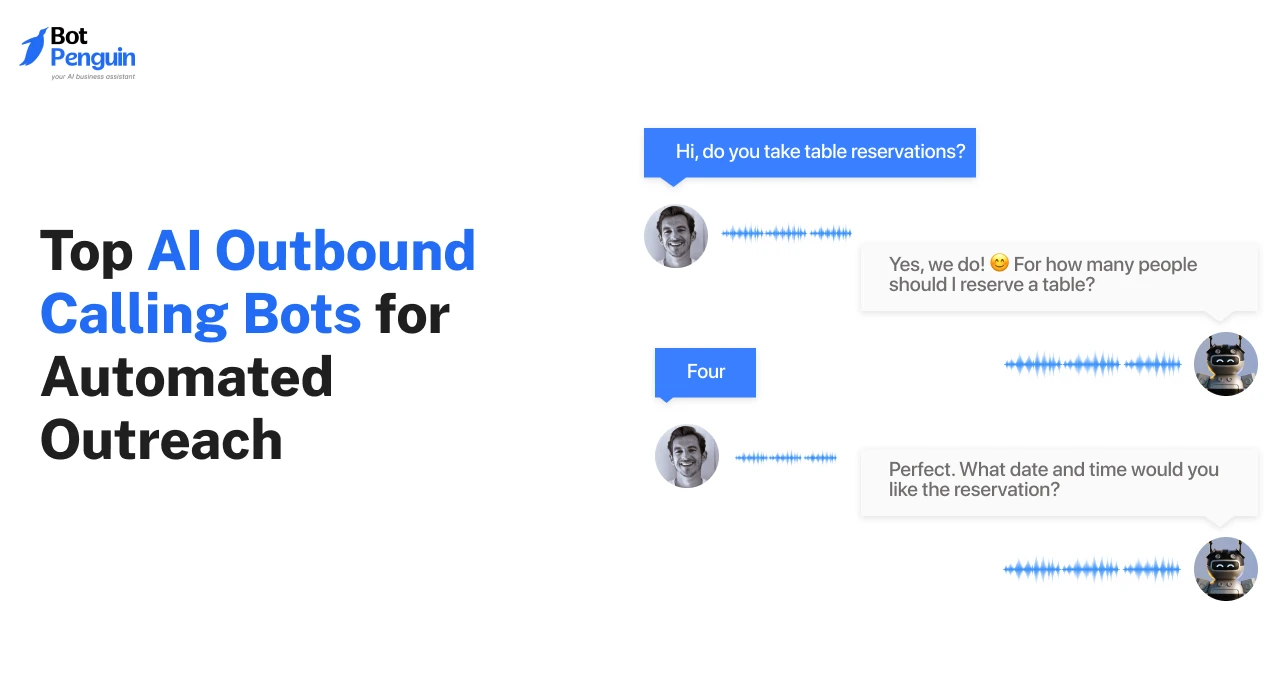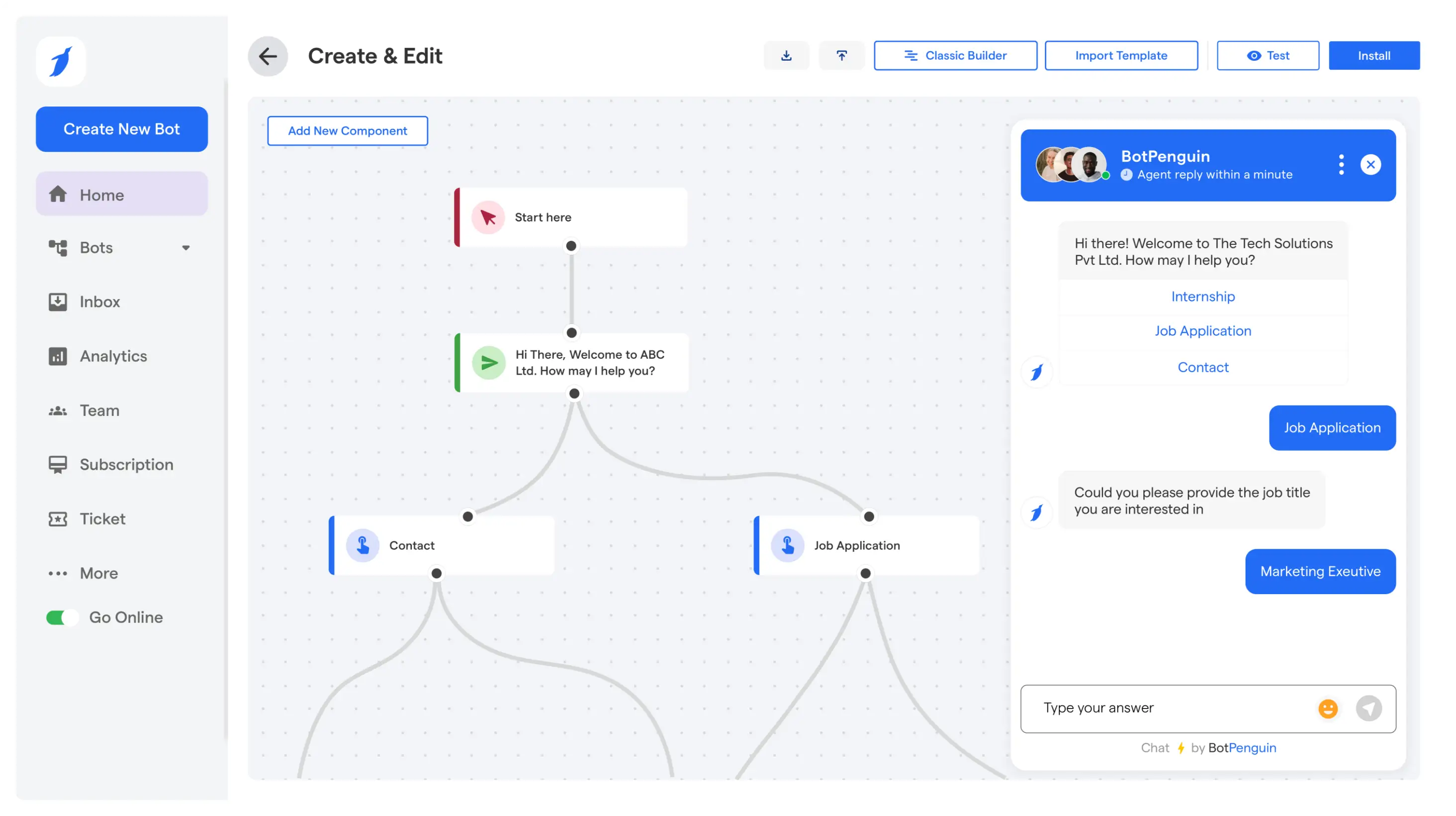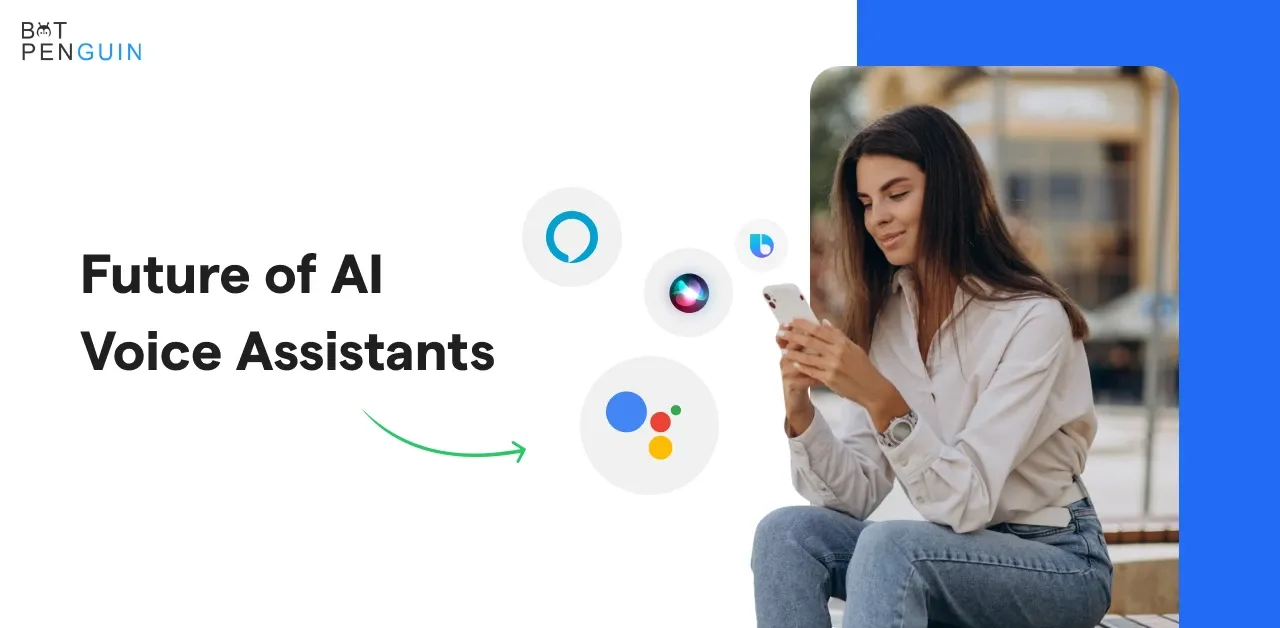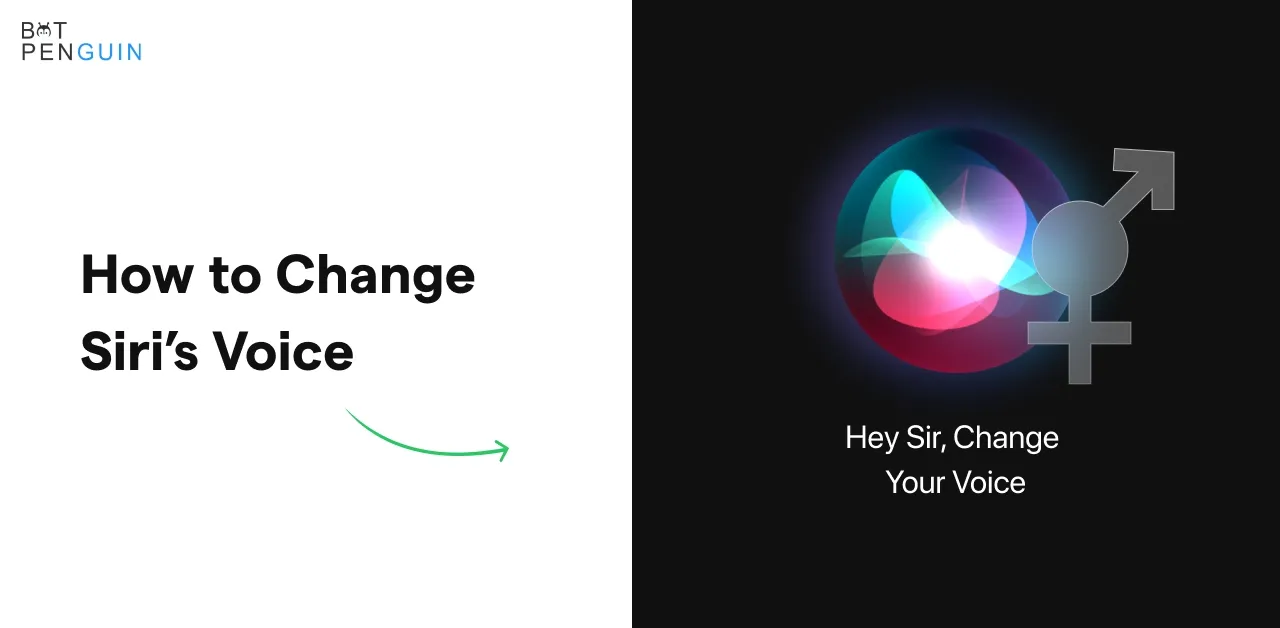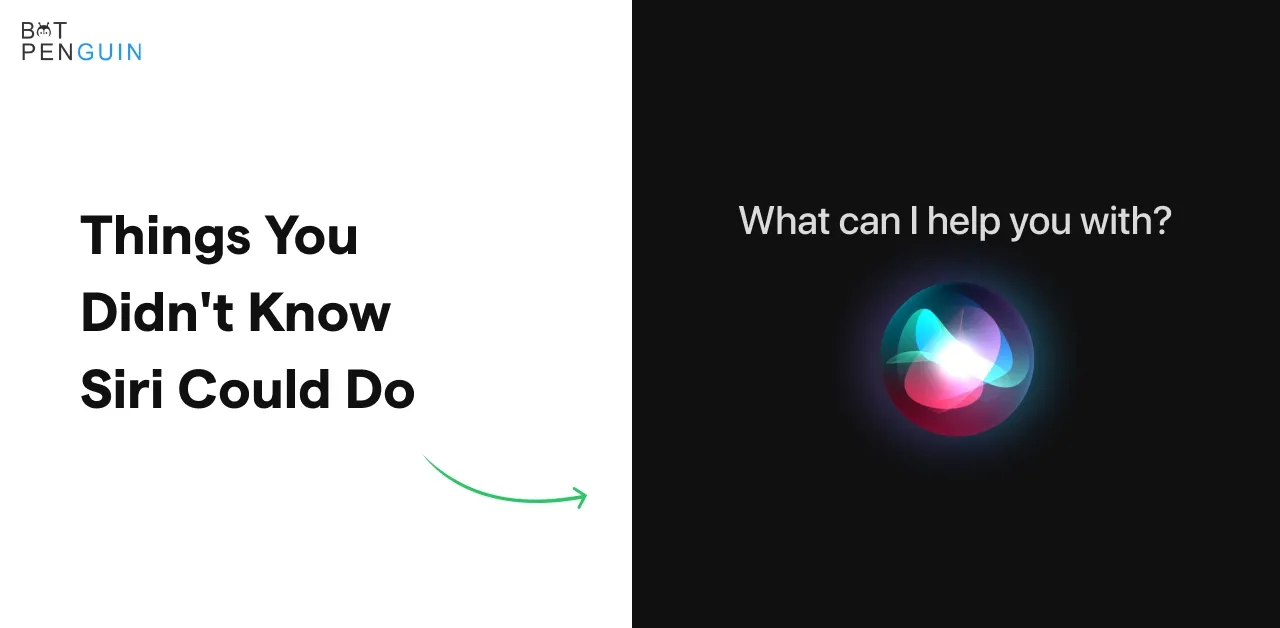Traditional outbound methods are inefficient. Sales teams spend hours dialing, yet many calls go unanswered, leading to wasted time and missed opportunities.
Whether it's reaching out for a sale, sending reminders, or following up with customers, the process can be cumbersome.
An AI outbound calling bot addresses these challenges. It ensures no lead is forgotten, no follow-up is missed, and time isn’t wasted on unqualified prospects. AI makes outreach faster, more consistent, and cost-effective, turning outbound calling into a scalable, predictable process.
This guide explores the top 10 AI outbound calling bots to automate outreach and drive results.
What is an AI Outbound Calling Bot?
An AI outbound calling bot automates voice-based outreach, handling tasks like lead qualification, reminders, and follow-ups.
It mimics human conversation but operates on a much larger scale with unwavering consistency, ensuring higher efficiency and engagement in your outbound efforts.
AI Bots vs. Human Agents: The Key Differences
Human Agents
- Average of 40–60 calls per day.
- Performance varies with factors like energy and training.
- High costs for hiring, training, and retention.
AI Bots
- Handle thousands of calls daily with no decline in quality.
- Provide consistent, error-free script delivery.
- No hiring costs and scale instantly without additional overhead.
Example: A real estate team may make 300 calls a day, but a single AI bot can reach 3,000 leads with the same uniform pitch.
How AI Outbound Calling Bots Drive Value
- Scalability: Increase outreach without expanding your team.
- 24/7 Availability: Engage leads across all time zones.
- Consistency: Automated calls maintain a uniform message every time.
- Multilingual Support: Reach global markets with ease.
Core Features of AI Outbound Calling Bots
- CRM Integration: Seamlessly sync with Salesforce, HubSpot, and more.
- Lead Qualification: Automatically filter hot vs. cold prospects.
- Analytics: Track outcomes, conversion rates, and performance with real-time dashboards.
- Workflow Automation: Trigger follow-ups via email, SMS, or human agents based on call results.
Example: In insurance, the bot can handle policy renewals, log responses, update CRM, and forward only qualified leads to sales reps for follow-up.
Why AI Outbound Calling Bots are Essential Today
Outbound sales and customer engagement face structural barriers. Traditional methods are inefficient and costly, with sales teams struggling to handle large volumes of calls and missing valuable follow-ups.
AI bots solve these challenges and significantly increase efficiency.
Key Pain Points Solved
- High SDR Costs: Reduce dependence on large sales teams.
- Low Connect Rates: Increase call attempts and contact rates without burning out agents.
- Missed Follow-Ups: Automate reminders to keep leads engaged.
- Inconsistent Quality: Deliver uniform, professional calls every time.
Industry Applications: Real-World Use Cases
AI bots are transforming outbound calling across various sectors:
- Real Estate: Qualify leads, schedule showings, and follow up on interest.
- Insurance: Remind customers about renewals, handle payments, and promote cross-sell opportunities.
- Healthcare: Automate appointment confirmations and patient reminders.
- E-commerce: Confirm orders, upsell related products, and re-engage abandoned carts.
- BPOs/Call Centers: Scale high-volume outbound outreach without adding staff.
Measuring ROI: What Really Matters
AI bots don’t just save time—they deliver measurable results. Here’s how businesses track ROI:
- Cost per Lead: Bots reach more people at a lower cost.
- Conversion Rates: Timely and consistent follow-ups improve conversion rates.
- Time Efficiency: Sales reps can focus on high-priority, warm leads.
- Scalability: Handle thousands of calls daily without extra hires.
10 Best AI Outbound Calling Bots
Outbound automation is no longer optional. Companies need scalable tools that can make thousands of calls, integrate with CRMs, and ensure timely follow-ups. An AI outbound calling bot delivers these functions by reducing manual effort and improving conversion rates.
The market has multiple players, each with unique strengths—some focus on lead nurturing, others on enterprise-scale integrations, and others on SMB affordability.
In this section, we’ll cover the top 10 AI outbound calling bots for automated outreach and show how they differ in features, integrations, and use cases.
First, here’s a quick review table for readers who want an at-a-glance comparison before diving deeper.
Feature Matrix: Top 10 AI Outbound Calling Bots vs. Refined Checklist
The table gives a snapshot of which platforms excel at scalability, CRM integration, compliance, and advanced AI. For decision-makers, it makes the strengths and gaps visible instantly.
Quick Insights for Decision-Makers
- Best for SMBs & Agencies → BotPenguin, KrispCall (cost-effective, flexible, but lighter AI & compliance).
- Best for Lead Nurturing & Human-like Engagement → Conversica.
- Best for Campaign-Oriented Sales Teams → Regie.ai.
- Best Enterprise-Grade Platforms → Ameyo, Cognigy (strong in compliance, workflows, advanced AI).
- Best Regional Multilingual Strength → Exotel (India & SEA).
- Best CRM-First Approach → Salesforce Einstein Voice.
- Best Blend of Service + Sales → SmartAction.
- Best Unified Comms + Outbound → Dialpad Ai Voice.
With the high-level comparison complete, we’ll now explore each AI outbound calling bot in detail, covering its core features, best use cases, strengths, and potential limitations to help you decide which solution aligns best with your business needs.
1. BotPenguin AI Calling Bot – Best for SMBs & Resellers
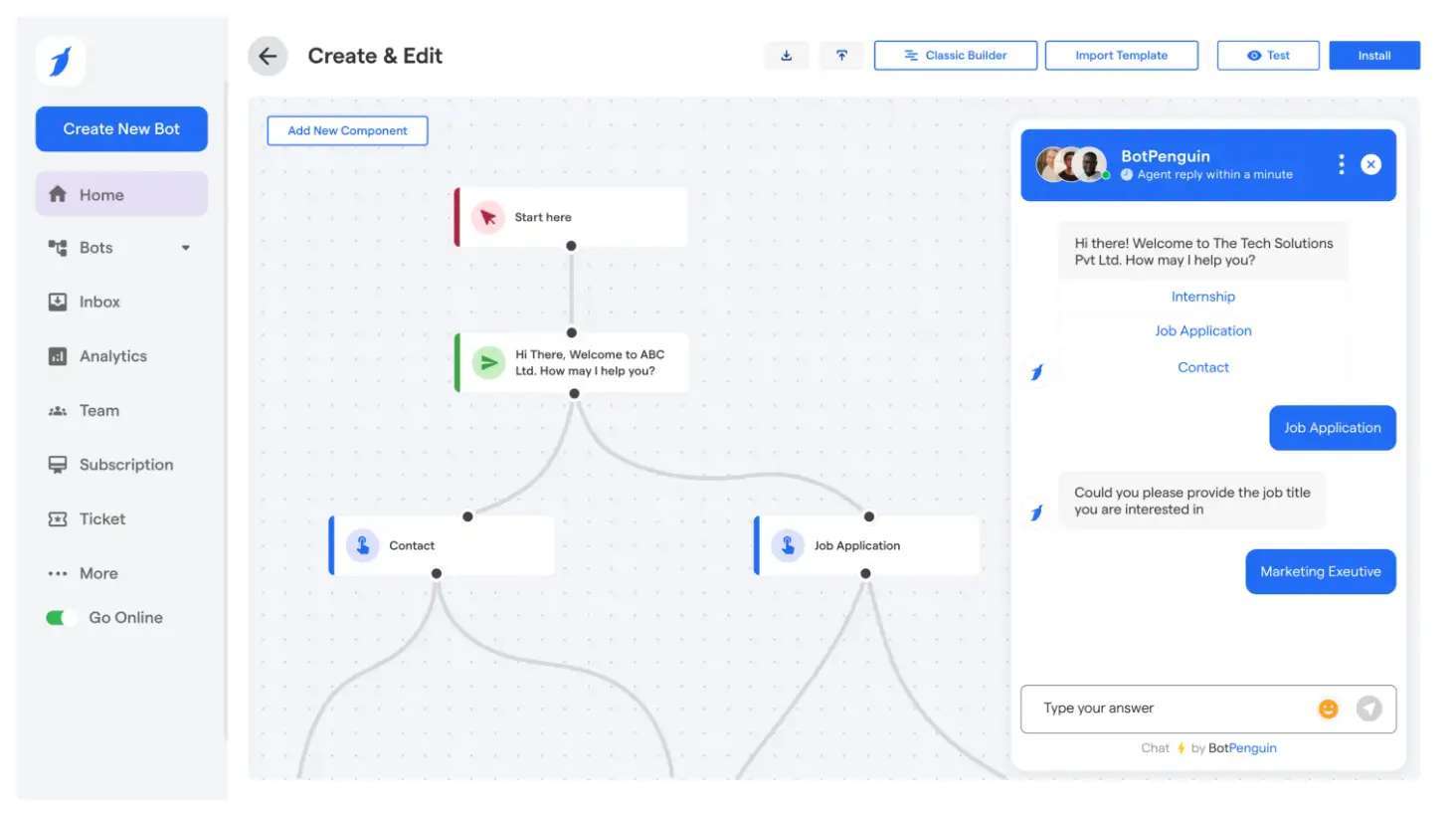
BotPenguin is an all-in-one conversational automation platform offering AI Agents, chatbots, voice bots, and outbound calling.
Its AI outbound calling bot is designed for SMBs, agencies, and resellers who want scalable outreach without high infrastructure costs. A unique strength is its white-label program, allowing agencies to rebrand and resell the solution.
Key Features
- Automated outbound calls with customizable scripts.
- CRM integrations with HubSpot, Zoho, Salesforce, and over 80+ integrations.
- Multichannel support (Social Media Channels, SMS, web chat).
- AI-driven lead qualification and call analytics.
- White-label option for agencies.
Best Use Case
- SMBs needing cost-effective outbound campaigns.
- Agencies and resellers looking to offer AI calling as a service.
- Businesses in real estate, healthcare, or education managing high inquiry volumes.
Pros
- Affordable for SMB budgets.
- White-labeling supports recurring revenue models.
- Multichannel automation extends beyond voice.
- Easy setup and integration with common CRMs.
Cons
- May not match enterprise-grade AI depth offered by larger players.
- Advanced customization may require support.
Pricing
BotPenguin offers tiered pricing based on features and usage. Plans typically start low enough for SMB adoption, with scalable options for agencies.
Custom pricing is available for white-label resellers.
Outbound calling automation is not just about volume. Businesses also want intelligent conversations that move leads forward. Some solutions focus on speed, while others specialize in engagement.
2. Conversica – Best for Lead Engagement and Follow-up
Conversica is a revenue acceleration platform built to engage prospects and customers through natural, two-way conversations.
It uses conversational AI to automate follow-ups, qualify leads, and re-engage dormant contacts. Instead of simply delivering a script, the platform adapts responses based on intent, making interactions more lifelike.
Key Features
- AI assistants that conduct two-way conversations via voice, email, and SMS.
- Automated lead qualification with real-time routing to sales reps.
- Native CRM and MAP integrations (Salesforce, HubSpot, Marketo).
- Multilingual capability to support global teams.
- Reporting dashboards for engagement tracking and ROI analysis.
Best Use Case
- B2B organizations needing persistent follow-ups with inbound leads.
- Enterprises managing large volumes of uncontacted or cold leads.
- Teams looking for conversational depth rather than simple scripted calling.
Pros
- Human-like engagement that goes beyond scripted outreach.
- Strong enterprise integrations.
- Proven performance in both sales and customer success functions.
Cons
- Pricing may be high for SMBs.
- Focuses more on engagement than raw call volume.
Pricing
Conversica does not publish fixed pricing; it operates on a custom-quote basis depending on scale and integrations.
Conversica shows how outbound calling bots can shift from scripted dialing to intelligent engagement. Next, we’ll cover platforms that lean more toward campaign automation and high-volume outreach.
3. Regie.ai – AI-Driven Outbound Campaigns
Regie.ai is built as a campaign automation platform designed to help sales teams scale outreach across multiple channels. It uses AI to generate messaging, personalize outreach, and orchestrate outbound calls alongside other touchpoints.
The platform goes beyond simple dialing by embedding calls into coordinated campaigns, ensuring prospects hear a consistent story wherever they’re contacted.
Key Features
- Multi-channel campaigns combining calls, emails, and LinkedIn outreach.
- AI-generated messaging tailored to target personas.
- Call sequencing and automated dialing capabilities.
- Integration with Salesforce, HubSpot, Outreach, and Salesloft.
- Analytics for campaign performance and pipeline impact.
Best Use Case
- B2B sales teams running structured outbound campaigns.
- Companies targeting multiple stakeholders in an account.
- Teams that want calls integrated with email and social instead of as a standalone channel.
Pros
- Strong personalization powered by AI content generation.
- Seamless integration with popular sales engagement tools.
- Campaign-level reporting that ties calling to pipeline growth.
Cons
- Less suited for industries needing pure call volume like BPOs.
- Pricing and features may be advanced for very small teams.
Pricing
Regie.ai offers custom pricing based on team size and feature requirements. Entry-level plans typically focus on messaging automation, while advanced tiers include full campaign orchestration.
Regie.ai demonstrates how outbound calls fit into coordinated campaigns rather than isolated tasks. Up next, we’ll look at platforms that focus on integrating voice AI directly within enterprise communication systems.
4. Dialpad Ai Voice – Unified AI Calling for Businesses
Dialpad Ai Voice is a cloud-based calling solution that leverages AI for transcription, live call coaching, and analytics. It works as a business phone system but also supports automated outbound calling when paired with its contact center features.
This makes it more than just an AI outbound calling bot—it’s a platform for voice-driven productivity.
Key Features
- AI-powered real-time transcription and call summaries.
- Automated outbound calling with CRM integration.
- Live agent coaching and sentiment analysis during calls.
- Multi-device access (desktop, mobile, browser).
- Analytics dashboards for call volume, outcomes, and team performance.
Best Use Case
- SMBs and mid-market companies needing a phone system with AI features.
- Sales teams that want outbound calling tied to coaching and analytics.
- Support teams looking for transcription and workflow automation.
Pros
- All-in-one platform with both inbound and outbound capabilities.
- Strong AI transcription and sentiment features.
- Easy to deploy across distributed teams.
Cons
- Not as specialized for high-volume outbound campaigns as BPO-focused platforms.
- Advanced AI features may require premium plans.
Pricing
Dialpad Ai Voice starts at $15 per user/month for standard calling features. Advanced AI, analytics, and contact center automation are available on higher-tier plans.
Dialpad shows how voice AI can be deeply integrated into daily communication systems, not just outbound campaigns. Next, we’ll review solutions that focus on conversational sales assistance and personalized outreach.
5. KrispCall – Cloud Telephony with AI-Driven Outreach
KrispCall is a cloud-based business phone system designed to manage both inbound and outbound calling. It supports multi-device access and integrates with CRMs, making it well-suited for startups and SMBs running sales campaigns or customer engagement at scale.
Its AI-driven automation helps teams handle high call volumes with consistent quality.
Key Features
- Virtual phone numbers in 100+ countries.
- Automated outbound calling with CRM integration.
- Shared numbers and call collaboration for teams.
- Call recording, monitoring, and analytics.
- Multi-device access (desktop, mobile, browser).
Best Use Case
- SMBs expanding into new geographies needing virtual numbers.
- Sales teams running outbound campaigns with global reach.
- Customer support teams managing distributed operations.
Pros
- Affordable and easy to set up for small businesses.
- Strong global calling coverage.
- Team collaboration features built-in.
Cons
- Less advanced AI capabilities compared to enterprise-first platforms.
- Best suited for SMBs rather than large-scale BPOs.
Pricing
KrispCall offers transparent plans starting at $15 per user/month, with advanced features available in higher tiers.
6. Exotel AI Voice – Strong in India & SEA Markets
Exotel is a customer engagement platform offering cloud telephony, contact center solutions, and AI voice automation.
Its AI outbound calling bot—branded as GenAI Voicebot—helps businesses run high-volume outbound campaigns with human-like conversations. Built for industries where call loads are massive, it enables both scalability and personalization.
Key Features
- AI-powered outbound calls with contextual understanding.
- Multilingual support for Indian and Southeast Asian languages.
- CRM and ticketing system integrations.
- Call analytics with intent recognition and outcome tracking.
- Cloud contact center deployment for quick scaling.
Best Use Case
- Telecom providers managing customer verifications.
- Financial services companies for collections and loan reminders.
- E-commerce and logistics for delivery confirmations.
- Enterprises in India and SEA needing multilingual, high-volume calling.
Pros
- Strong regional language support.
- Proven reliability in high-volume environments.
- Seamless integration with Exotel’s broader cloud telephony stack.
Cons
- More regional than global in focus.
- Advanced analytics may require enterprise plans.
Pricing
Exotel provides custom pricing based on call volume and feature requirements. Packages are flexible, tailored for both SMBs and enterprises.
Exotel highlights how regional specialization—especially in multilingual markets—can make AI voice automation indispensable. From here, the next tool shows how large-scale customer engagement can extend into omnichannel experiences.
7. Ameyo Voice AI – Enterprise-Grade Conversational Voice
Ameyo is a contact center technology provider with strong expertise in customer engagement. Its Voice AI product automates outbound calls while also supporting inbound interactions.
The platform focuses on delivering natural, human-like conversations that reduce agent workload and improve customer experience.
Key Features
- AI-powered voice bots for outbound and inbound calls.
- Multilingual support for global and regional languages.
- Seamless integration with CRM and helpdesk platforms.
- Intelligent call routing with escalation to human agents.
- Analytics dashboards with call intent and outcome tracking.
Best Use Case
- Enterprises running large-scale outbound campaigns for collections, renewals, or verifications.
- BPOs handling customer engagement for telecom, banking, and retail clients.
- Organizations looking for omnichannel coverage where voice, chat, and digital are unified.
Pros
- Strong enterprise focus with high scalability.
- Omnichannel automation beyond voice.
- Human-agent handoff ensures complex cases are handled smoothly.
Cons
- Better suited for large organizations than small startups.
- Custom setup may require professional services.
Pricing
Ameyo offers custom enterprise pricing, with packages designed around usage volume, integrations, and deployment needs.
Ameyo’s enterprise-first design shows how AI voice can support both outbound and inbound at scale. The next solution pushes even further into enterprise territory, focusing on integration depth and advanced voice gateways.
8. Cognigy Voice Gateway – Enterprise-Grade Integration and Scalability
Cognigy Voice Gateway is part of Cognigy’s conversational AI platform, designed to connect voice bots to telephony networks. It provides enterprises with a bridge between AI-powered conversations and traditional voice infrastructure.
This allows companies to scale outbound and inbound voice automation without disrupting existing systems.
Key Features
- AI-driven voice automation for inbound and outbound calls.
- Direct integration with SIP trunks, contact center platforms, and IVR systems.
- Real-time speech recognition and text-to-speech.
- Scalable architecture designed for high call volumes.
- Analytics for call flows, intents, and outcomes.
Best Use Case
- Large enterprises with complex telephony environments.
- Organizations needing outbound automation tightly integrated with CRM, ERP, or IVR.
- Industries like banking, airlines, and utilities where call reliability and compliance are critical.
Pros
- Enterprise-level scalability and security.
- Seamless integration into existing telecom and IT infrastructure.
- Supports both inbound and outbound automation.
Cons
- Requires technical expertise for deployment.
- Overkill for SMBs or smaller sales teams.
Pricing
Cognigy operates on a custom enterprise pricing model, tailored to usage, integrations, and deployment complexity.
Cognigy shows how outbound calling can be part of a fully integrated voice ecosystem rather than a standalone tool. The next solution highlights how CRM giants like Salesforce are embedding voice AI directly into their sales workflow.
9. Salesforce Einstein Voice – CRM-First AI Calling
Einstein Voice is part of Salesforce’s AI-powered suite, designed to enhance productivity through natural voice interactions.
While not a standalone AI outbound calling bot, it equips Salesforce users with voice capabilities for outbound engagement, call logging, and intelligent reminders. Its biggest strength lies in eliminating manual data entry and ensuring every interaction is captured within the CRM.
Key Features
- Voice-driven updates to Salesforce records.
- Automated outbound call scheduling and follow-ups.
- AI-powered insights based on call transcripts and CRM data.
- Native integration with Sales Cloud and Service Cloud.
- Personalized dashboards for managers to track rep performance.
Best Use Case
- Enterprises already invested in Salesforce CRM.
- Sales teams that want outbound calling tied directly to pipeline tracking.
- Managers who need data-driven insights without extra tools.
Pros
- Seamless integration inside Salesforce.
- Reduces admin work for reps by automating call logging.
- Provides managers with real-time call data tied to opportunities.
Cons
- Limited flexibility outside Salesforce ecosystem.
- Best suited for existing Salesforce customers; not ideal for standalone use.
Pricing
Einstein Voice is included in certain Salesforce editions, with pricing varying based on CRM licensing and AI feature tiers.
Salesforce Einstein Voice shows how outbound automation becomes more powerful when aligned with CRM workflows. Next, we’ll explore a solution that blends outbound calling with customer service automation for a broader engagement strategy.
10. SmartAction AI Voice – Outbound + Service Automation
SmartAction specializes in conversational AI for customer engagement, offering voice-first automation that reduces agent workload. Its AI Voice solution covers both inbound and outbound use cases, focusing on natural, human-like interactions.
For companies where customer experience matters as much as call volume, it helps automate repetitive communication while still allowing escalation to live agents when needed.
Key Features
- Outbound calling for reminders, renewals, and customer updates.
- Conversational AI for natural two-way interactions.
- Seamless handoff to human agents when required.
- Integration with CRM, ticketing, and contact center platforms.
- Analytics to track call outcomes and intent recognition.
Best Use Case
- Utilities and telecom providers needing bill reminders and service updates.
- Healthcare providers for appointment confirmations.
- Financial services for collections and compliance-driven calls.
Pros
- Strong balance between outbound automation and customer care.
- Human-like conversations improve customer experience.
- Proven track record in industries with compliance needs.
Cons
- More service-focused than pure outbound sales.
- Custom setup may require professional services.
Pricing
SmartAction follows a custom pricing model, tailored to enterprise usage, call volume, and integration requirements.
SmartAction shows how outbound calling bots can serve not just sales, but also retention and service. With all ten tools covered, the next step is helping businesses decide how to choose the right one for their needs.
Each platform on this list solves a different part of the outbound challenge, whether it is high-volume scalability, CRM-first automation, multilingual outreach, or lead nurturing.
The right choice depends on your business size, industry, and growth priorities. Use the feature matrix as your quick reference, then align the detailed reviews with your specific needs.
With the landscape mapped out, the next step is understanding how to choose the best AI outbound calling bot for your organization.
How to Choose the Right AI Outbound Calling Bot
Picking the right AI outbound calling bot is less about features on paper and more about business fit. Use this checklist to guide your decision:
✔ Budget alignment
- SMBs: affordable plans with core automation.
- Enterprises: advanced AI and compliance justify higher costs.
✔ CRM compatibility
- Must integrate with Salesforce, HubSpot, or Zoho.
- Prevents manual syncing and data gaps.
✔ Compliance readiness
- Look for GDPR, HIPAA, or TCPA certifications.
- Critical for finance, healthcare, and insurance.
✔ Scalability
- Handles growth from hundreds to thousands of calls.
- Supports long-term expansion without infrastructure issues.
✔ Multilingual support
- Essential for global or regional markets.
- Covers both major languages and local dialects.
The best fit depends on your growth stage. Startups may only need core automation, while BPOs or enterprises require enterprise-grade compliance, workflows, and advanced AI.
With selection criteria clear, the next step is to look ahead at how outbound calling technology will evolve in the future.
Conclusion
Outbound automation is critical in today’s competitive market. Traditional calling methods struggle with high costs, missed follow-ups, and low connect rates. In contrast, an AI outbound calling bot offers scalability, consistency, and efficiency, ensuring no opportunity is missed.
AI-driven outreach runs 24/7, supports multiple languages, and automates follow-ups, transforming outreach into a predictable growth engine. With AI adoption becoming a must, early movers will gain lower costs, higher conversions, and more efficient teams.
If you’re ready to scale outreach and stay ahead of the competition, book a demo with BotPenguin’s AI outbound calling bot today. What’s innovative now will soon be the standard, and those who prepare will lead.
Frequently Asked Questions (FAQs)
How secure is an ai outbound calling bot for handling sensitive customer data?
Most bots comply with data protection standards like GDPR and HIPAA. Calls are encrypted, and integrations with CRMs often support role-based access.
Choosing a vendor with compliance certifications ensures customer data remains secure during outbound campaigns.
Can an ai outbound calling bot detect if a prospect is interested or disengaged during a call?
Yes. Advanced bots use natural language processing and sentiment analysis to gauge intent. They identify hesitation, positive signals, or disengagement and adjust responses or escalate to a live agent when needed, ensuring better lead qualification accuracy.
Does an ai outbound calling bot work for small businesses with very limited budgets?
Yes. Many providers offer pay-as-you-go or per-call pricing models. This allows small businesses to run targeted campaigns without heavy upfront investment.
Bots help them compete with larger players by automating outreach efficiently at low cost.
How customizable is an ai outbound calling bot for different industries?
Modern platforms allow businesses to design industry-specific scripts, workflows, and compliance checks.
For example, healthcare bots follow HIPAA rules, while finance bots can handle Know Your Customer (KYC) processes. This makes them adaptable across varied business verticals.
Can an ai outbound calling bot integrate with messaging channels like WhatsApp or SMS?
Yes. Many solutions offer omnichannel outreach where outbound voice calls are paired with SMS or WhatsApp reminders. This increases engagement rates by reaching customers on their preferred channel, creating a seamless follow-up system.
